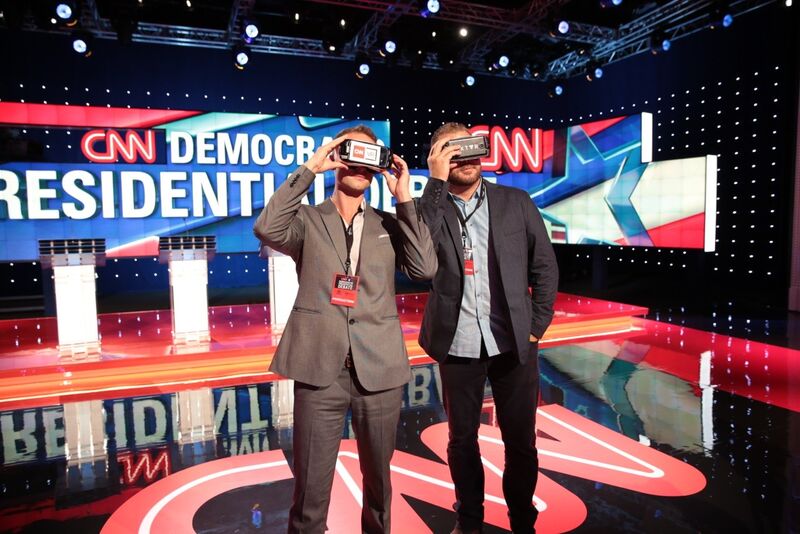The world’s been fascinated with virtual reality since the good ole days of the View-Master. In recent months, the up-and-coming immersive viewing method is gaining traction by the minute. In fact, if you had VR gear strapped to your head right now, you d see promising, cutting-edge news coming at you from every angle.
By the end of 2016, Jupiter Research predicts three million VR units will be sold worldwide. Fast forward 10 years from today, and you can already see the field of greens. According to investment bank Piper Jaffray, the market for virtual reality content will be $5.4 billion by 2025, with 500 million headsets being sold.
Here’s a tip for marketers from Matt Bretz, vice president and creative director for Ayzenberg, a full-service advertising agency: jump on the bandwagon while there’s still some seats available. (Editor’s note: [a]listdaily is the media arm of the Ayzenberg Group.)
Bretz said that the first thing marketers need to realize about working with and for VR products is that there s actually at least three essential sub-categories to distinguish between. (See bottom for breakdown)
It’s critical for marketers to start making the distinction between VR, augmented reality and mixed reality not just because it’s different mediums but also because it’s actually complementary emerging markets not competitive formats. So the good news is the revolution will be tripled.
David Cole, co-founder of NextVR, a purveyor of live and on-demand virtual reality programming with such credits as the NBA s first VR broadcast, and even the Democratic Presidential Debate, intimated on the popular notion: the VR revolution is coming.
Bretz said a second important insight for marketers is that VR, AR and MR marketing will roll out in two distinct phases. “For the next five years before these devices saturate the market, we will have to make marketing assets that communicate the immersive, 3D experiences these devices deliver but do it on current gen-2D screens. This 2D marketing of 3D products will be a strategic and creative challenge that represents a relatively brief but lucrative opportunity to marketers. And at the same time, we ll be preparing to market VR, AR and MR on the devices themselves once the user base grows, presumably using native assets from the experiences built upon them. So lots to do!”
The New York Times introduced their $5 Google Cardboard virtual reality viewer with hopes of kicking off the mass adoption of VR. Once Facebook acquired Oculus for $2 billion in 2014, championing advertisers with 360-degree virtual reality ads seemed like a foregone conclusion. Have you seen how brands and publishers are capitalizing on the new-found storytelling technique
But make no mistake about it VR is still in a nascent stage. Ted Schilowitz, a futurist at 20th Century Fox, told the NYT the industry is in the brick-size cellphone days only to add every few months, we’re reaching closer to the target.
“It’s the next big arms race for businesses to win,” said Jonathon Oliver, global head of innovation at Microsoft, per Campaign U.S. “One thing that you can say that is very telling, is the level of investment, and the level of motivation from a number of difference companies.”
Bretz advised anyone readying for a head-first dive in the industry to buy a 360-degree camera or, if you are so inclined, open a specialized production company like, right now.
“It seems obvious that whether you’re working with VR, AR or MR 360-degree assets will be a key component of marketing 3D on 2D screens,” said Bretz.
In the near term, VR likely most appeals to prodigal gamer-types. SuperData Research forecasts that by the end of 2016, mobile consumers will have purchased 18 million VR devices, and that over the next two years, VR gaming will reach $8.9 billion, growing more than 10 times its revenue in 2015.
But those footsteps you hear in the interim is the virtual reality industry in its entirety, strutting with swagger, ready to kick down tech’s doors. The best part: You can see them coming from the other side.
3 types of VR, as explained by Matt Bretz:
Virtual reality: A VR device like Oculus Rift or Google Cardboard replaces your view of the real world entirely with a digitally created fantasy.
Augmented reality: An AR device like Google Glass overlays pre-baked digital elements on your real world which you can still see. This is a quick, low processing power way to put digital tools and information at your disposal think Iron Man s heads-up-display.
Mixed reality: A MR device like Magic Leap or Microsoft HoloLens also lets you see the real world but adds programmable objects made of light or holograms with which you can interact in real time and which behave according to most laws of physics.

